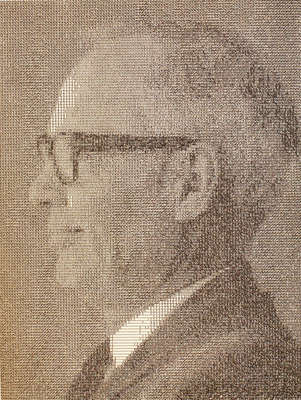Allner was a designer, typographer and painter who pioneered computer-designed magazine layout. He collaborated with engineers to develop technology-aided design.
In the late 1920s he studied at the Dessau Bauhaus. His teachers included Paul Klee, Wassily Kandinsky, Joost Schmidt and Laszlo Moholy-Nagy.
During his 12 years at Fortune masgazine, in addition to maintaining the magazine’s Bauhaus-inspired contemporary typography and elegant overall design scheme, he personally created 79 covers, which ran the gamut from minimalist graphic abstraction to complex photographic collage.
In July, 1965, he designed the first cover on a national magazine with the aid of a computer. A Fortune 500 press release proudly noted that the image, consisting of arrows in upward flight behind large illuminated numerals, was generated on a computer’s oscilloscope and then photographed.^
He collaborated with H. Philip Peterson from Control Data Corporation Laboratories to create a portrait of the president of the company at that time, William Charles Norris. It was the first computer-generated portrait to be published, illustrating an article about the Control Data Corporation in the February edition of Fortune in 1968.
Allner also worked as an abstract painter (influenced by Josef Albers) and created enigmatic refuse-assemblages. ln 1989, he bequeathed extensive material from his typographic and artistic oeuvre to the Bauhaus Collection Dessau.


